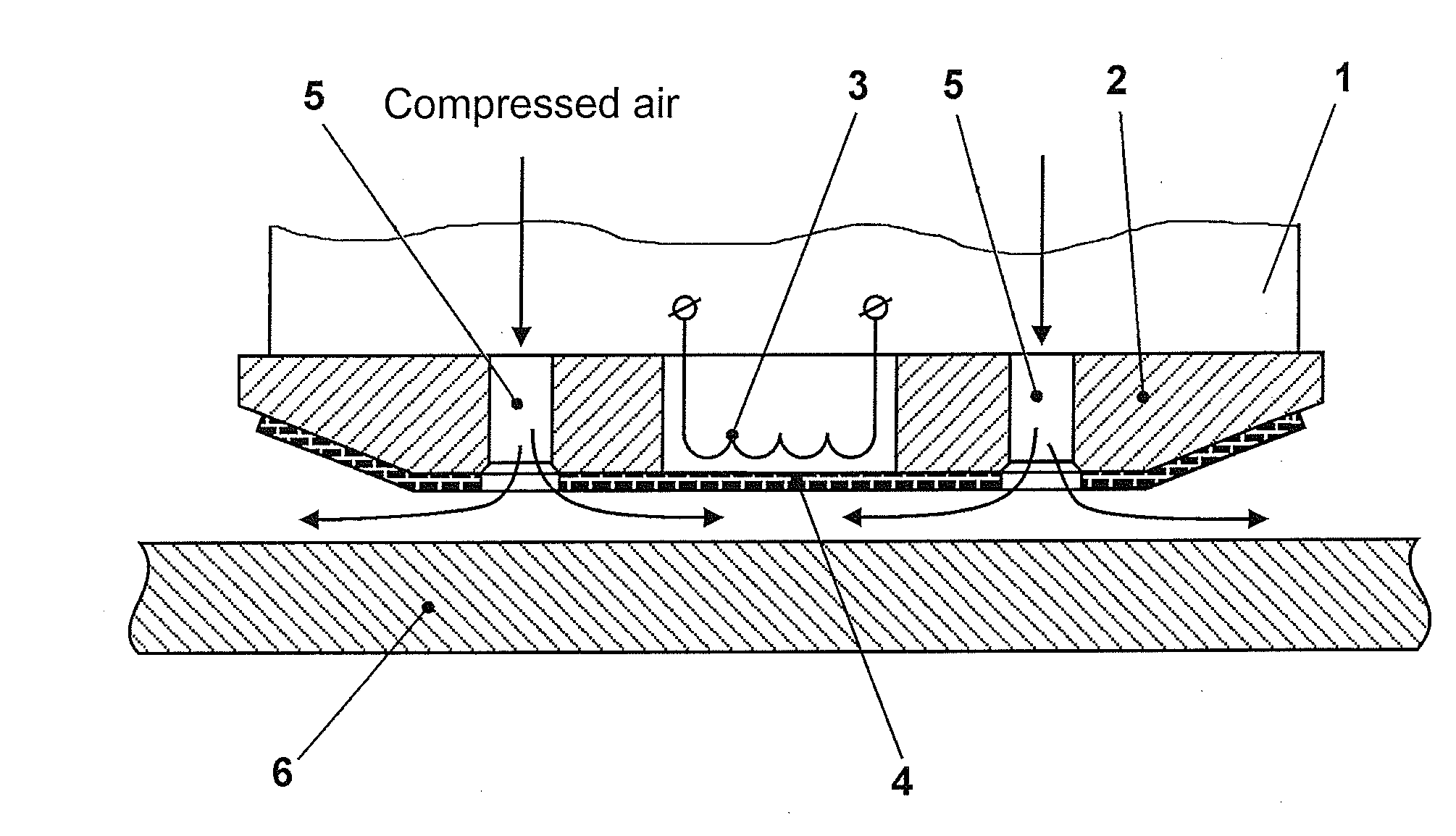Electromagnetic - acoustic converter
a technology of electromagnetic and acoustic converter, applied in the direction of analyzing solids using sonic/ultrasonic/infrasonic waves, blast furnace components, blast furnaces, etc., can solve the problem of interference for receiving useful signals from objects, restricted case size, and high level of acoustic interference, so as to increase the operational durability of emat and the effect of high resistance properties
- Summary
- Abstract
- Description
- Claims
- Application Information
AI Technical Summary
Benefits of technology
Problems solved by technology
Method used
Image
Examples
Embodiment Construction
[0027]Shown in FIG. 1 electromagnetic acoustic transducer (EMAT) includes case 1 (illustrated symbolically) fixed thereto from the side faced to the inspected object 6 substrate 2 with holes 5 for air supply, inductor 3 provided in the substrate and ceramic protector 4. Other elements of EMAT, such as concentrator, magnetic circuit, connecting cable are conventionally not shown.
[0028]The substrate 2 is made from aluminium or aluminium alloy, and the ceramic protector 4 is formed in form of a ceramic plate of preferentially constant thickness. The ceramic plate forming protector 4 is made of such size that its periphery embraces holes 5 in substrate 2. Preferably the area of a ceramic plate substantially is equal to area of the lower face of substrate 2, and the shape of the ceramic plate substantially coincides with the shape of the lower face of substrate 2. The ceramic plate is rigidly fixed to the lower face of substrate 2, e.g. adhered thereto. Holes are foamed in the ceramic pl...
PUM
| Property | Measurement | Unit |
|---|---|---|
| thickness | aaaaa | aaaaa |
| sizes | aaaaa | aaaaa |
| shape | aaaaa | aaaaa |
Abstract
Description
Claims
Application Information
 Login to View More
Login to View More - R&D
- Intellectual Property
- Life Sciences
- Materials
- Tech Scout
- Unparalleled Data Quality
- Higher Quality Content
- 60% Fewer Hallucinations
Browse by: Latest US Patents, China's latest patents, Technical Efficacy Thesaurus, Application Domain, Technology Topic, Popular Technical Reports.
© 2025 PatSnap. All rights reserved.Legal|Privacy policy|Modern Slavery Act Transparency Statement|Sitemap|About US| Contact US: help@patsnap.com


